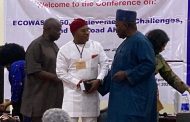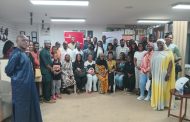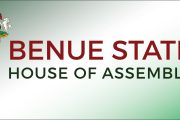 Taken at 5.37 pm last Thursday, this picture is the formative stage of a daily experience for all who live between Nasarawa State and Abuja township. Conservatively between 6 – 10. 30 am and 4. 30 – 8.30 pm daily, the traffic on this route, particularly between Abacha Barracks and Nyanya is bumper to bumper in spite of the obvious security implications, its contribution to climate change and it’s threat to productivity because of the man hours and energy wasted on the road by workers, businessmen and women and even traders. Yet, it has been there even before the return of democracy in 1999.
Taken at 5.37 pm last Thursday, this picture is the formative stage of a daily experience for all who live between Nasarawa State and Abuja township. Conservatively between 6 – 10. 30 am and 4. 30 – 8.30 pm daily, the traffic on this route, particularly between Abacha Barracks and Nyanya is bumper to bumper in spite of the obvious security implications, its contribution to climate change and it’s threat to productivity because of the man hours and energy wasted on the road by workers, businessmen and women and even traders. Yet, it has been there even before the return of democracy in 1999.
Neither the Obasanjo regime which started the new and more expanded lanes nor any of the subsequent regimes has been able to halt the jam. Instead, what governors, ministers and top government officials caught in the traffic do is to drive against the traffic on the other side, making their way with the help of the siren. As it is now, no parents can rush home from the township to respond to an emergency during the peak periods of the jam.
It now seems another case of where all the king’s men and the king’s horses, from the Federal Road Safety Commission, (FRSC) to the Traffic Wardens to the much feared VIOs, the men of the ubiquitous Nigeria Police to the military – have still to find an answer. Not even the replacement of the old single lane with multi-lane road network appears to cure it, perhaps because of recent population movement into the Federal Capital and its environs.
How might this be understood? It would seem to speak to the very concept of the city as a battle space between citizenship and capital. The city is where wealth is created. By implication, it is the space of those who organise production and the benefits of doing so. But since production automatically implies producers, the city is also the space of the labourers. The city must, therefore, become a battle space for resolution of the contradictory interests of labour and capital. Although Nigeria is not an industrial society, a city of Abuja’s stature must reflect this tension.
This analytical background might be necessary in order to forestall the arrival of problem solving teams with proposals that are not informed by where the problem might be coming from.Still, the question is that of what is to be done!




























